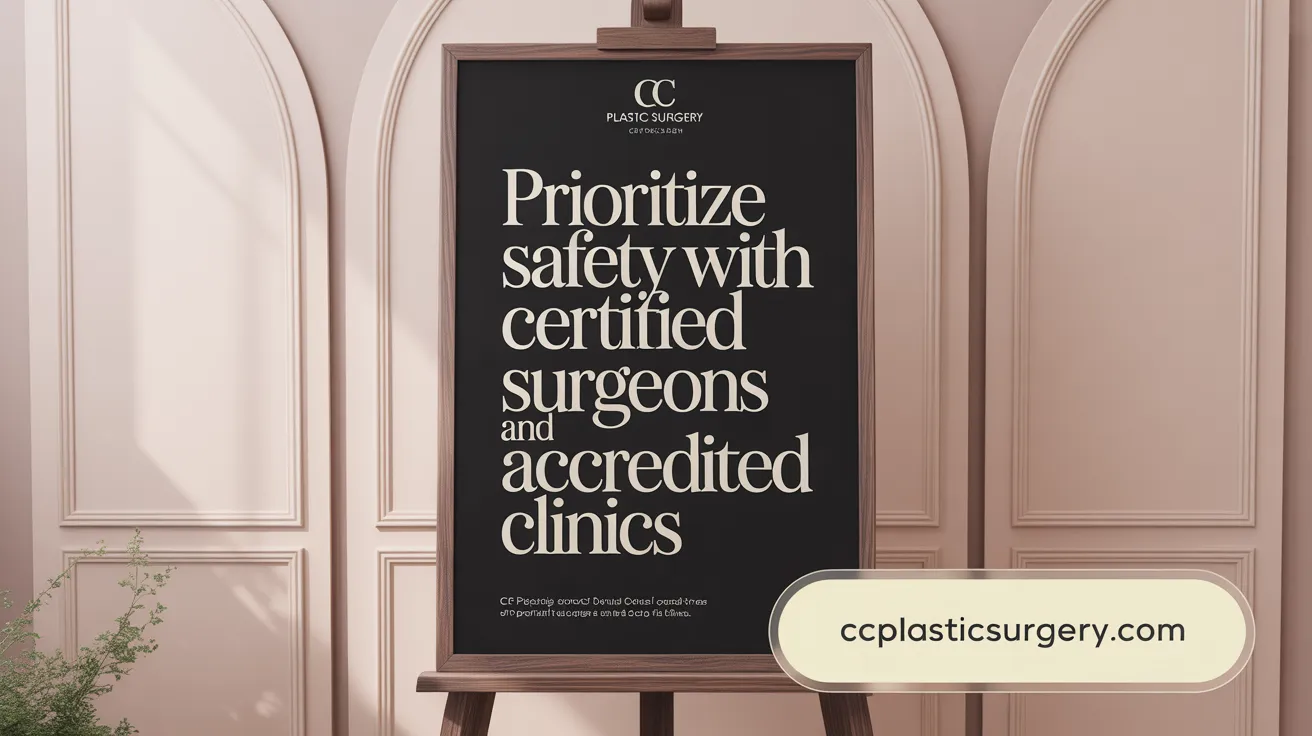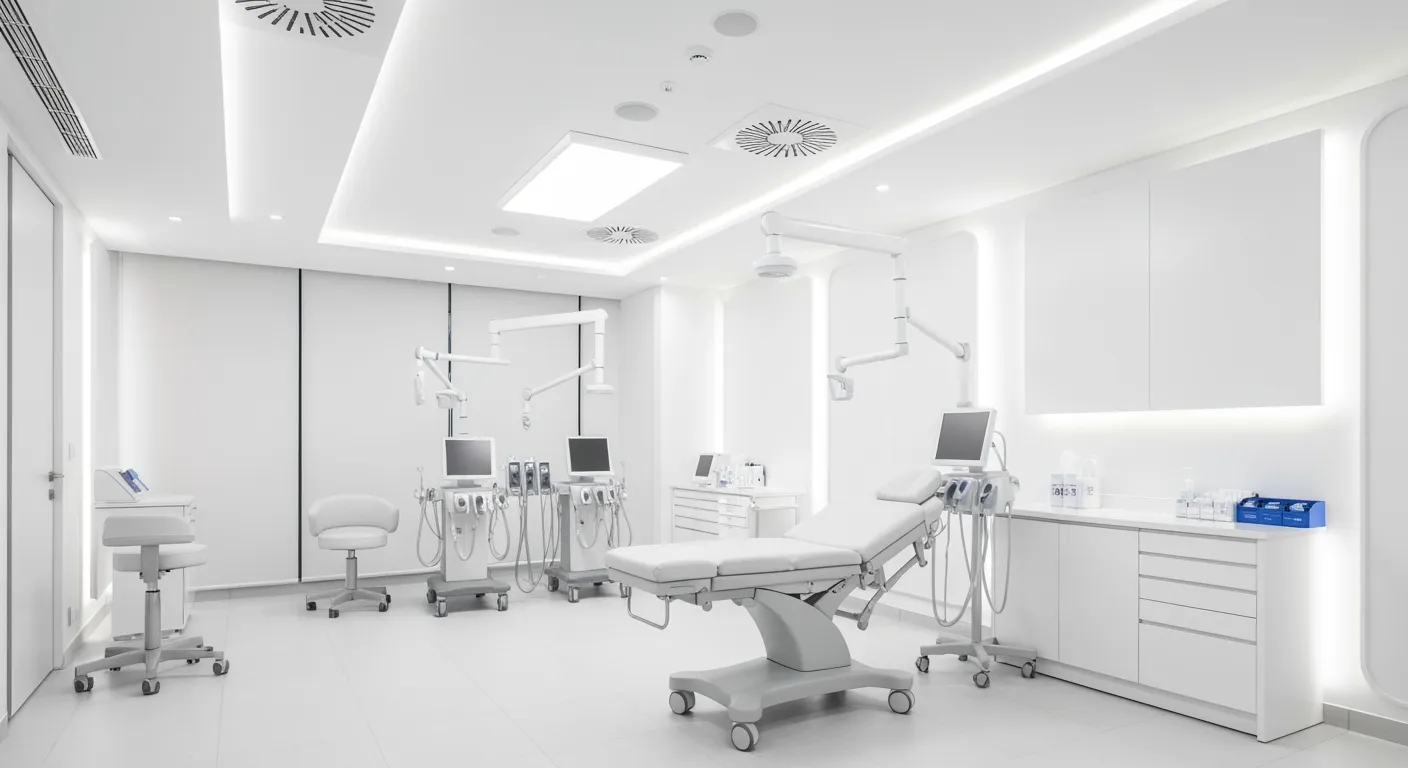
November 13, 2025
what is revision rhinoplasty surgery: candidacy & recovery
what is revision rhinoplasty surgery? Learn who qualifies, what to expect during recovery, and tips for choosing a skilled, trusted surgeon.
Nov 13, 2025

Cosmetic surgery focuses on reshaping normal body structures to enhance appearance and boost self-esteem. It involves elective procedures aimed at improving aesthetic features across the face, neck, and body. Unlike reconstructive surgery, which corrects abnormalities caused by congenital defects, trauma, or disease, cosmetic surgery primarily enhances normal structures to meet patient desires.
Cosmetic surgery is elective and typically not covered by health insurance. In contrast, reconstructive surgery addresses structural abnormalities and is often covered by insurance due to its functional benefits. Both fields require skilled surgeons, but their goals differ: cosmetic surgery prioritizes appearance, while reconstructive surgery focuses on restoring function and normal anatomy.
Ideal candidates have realistic expectations and understand the possible outcomes and risks. Psychological screening is important, especially to identify conditions like body dysmorphic disorder (BDD), which may not improve with surgery and can lead to dissatisfaction. Mental health evaluation helps ensure patients have appropriate motivations and emotional readiness.
Since cosmetic surgery is elective, insurance rarely covers it. Exceptions exist for reconstructive procedures or surgeries deemed medically necessary. To support patients financially, many practices offer payment plans and financing options such as CareCredit, facilitating access to desired treatments while ensuring responsible care.

Cosmetic surgery encompasses a variety of procedures aimed at enhancing appearance and boosting self-esteem. Facial surgeries include facelifts, brow lifts, eyelid surgery (blepharoplasty), and rhinoplasty to reshape or rejuvenate the face. Body contouring surgeries include breast augmentation, lifts, and reductions; abdominoplasty (tummy tuck); liposuction; brachioplasty (arm lift); and thigh lifts. These procedures are usually elective and focus on improving body proportions and aesthetic appeal.
Non-surgical cosmetic treatments are popular for those seeking subtle improvements without surgery. Botox® injections relax muscles to reduce wrinkles in the upper face, with effects lasting 3 to 4 months. Dermal fillers like Restylane® smooth lines and restore volume, particularly in the lower face, lasting approximately six months to one year. Additional options include laser skin resurfacing, microdermabrasion, and skin tightening treatments, which address skin texture, tone, and signs of aging.
The initial consultation is a vital step where surgeons listen carefully to patient goals, perform a physical examination, and discuss expected outcomes and treatment options. A comprehensive medical history review ensures patient safety and addresses any health concerns. The surgeon also evaluates suitability for surgery and discusses anesthesia options, risks, and recovery times as outlined in the consultation process.
Patients undergo thorough pre-surgical evaluation, including a complete series of tests to assess physical condition and readiness for elective surgery. These tests help minimize risks and tailor care plans. Patients are advised to disclose medications, tobacco use, allergies, prior procedures, and medical conditions. Following preoperative instructions, such as avoiding smoking and certain medications, contributes to safe and successful outcomes, detailed in the preoperative evaluation process.

Board certification is a crucial marker of surgeon qualification in cosmetic surgery. Surgeons certified by recognized boards such as the American Board of Cosmetic Surgery (ABCS) or the American Board of Plastic Surgery have undergone extensive training, rigorous examinations, and peer review to ensure they meet high professional standards. Certification confirms a surgeon's expertise specifically in cosmetic or plastic surgery, which reassures patients that the surgeon possesses the necessary skills and knowledge to perform procedures safely and effectively.
Accreditation bodies like the Joint Commission on Accreditation of Healthcare Organizations (JCAHO), the American Association for Accreditation of Ambulatory Surgery Facilities (AAAASF), and the Accreditation Association for Ambulatory Health Care (AAHC) establish safety and quality benchmarks for surgical facilities. Their accreditation signifies that a surgical center adheres to strict standards in areas such as infection control, staff qualifications, equipment, and emergency preparedness. Choosing procedures performed in accredited facilities helps uphold patient safety.
Most cosmetic surgeries are elective and performed on an outpatient basis. Safety in outpatient surgery relies on a combination of certified surgeons, accredited surgical centers, and qualified medical staff carefully monitoring anesthesia and recovery. These components work together to minimize risks and manage potential complications efficiently. Proper pre-surgical evaluation process, including comprehensive testing, ensures candidates are suitable for surgery, further enhancing safety.
All surgical procedures carry inherent risks such as bleeding, infection, and adverse anesthesia reactions. Open communication between patient and surgeon about these risks is vital before proceeding. Experienced surgeons plan surgeries tailored to individual health profiles and follow strict protocols to minimize risks. Should complications arise, surgeons trained in both cosmetic and reconstructive techniques are equipped to address them through revision surgeries in cosmetic procedures or other corrective measures, ensuring patient safety and desirable outcomes.

Recovery time after cosmetic procedures varies by the type of surgery and patient factors. Facial surgeries generally involve minimal discomfort and often allow patients to resume social activities within one to two weeks. Mini facelifts typically require about two weeks of recovery. Procedures like tumescent liposuction may cause moderate discomfort but generally have quicker healing due to techniques such as tumescent liposuction, which reduces bruising and swelling. More extensive surgeries, including abdominoplasty (tummy tuck) and breast augmentation, can cause discomfort similar to childbirth and may require several weeks before full recovery.
Bruising and swelling are common side effects of cosmetic surgery but tend to subside with time. Patients are advised to follow post-operative instructions carefully to minimize these effects. Pain is typically controlled through prescribed medications, and mild discomfort is expected. Techniques such as injecting dilute epinephrine during surgery help reduce bleeding and subsequent bruising.
To further reduce swelling and bruising, patients should sleep in a reclined position as recommended by their surgeon. Application of cold or warm compresses as directed can aid recovery. Following specific aftercare protocols tailored to each procedure enhances healing and optimizes surgical outcomes.
Complications, although rare with qualified surgeons, can include asymmetry, implant shifting, or uneven healing. When these issues occur, revision surgeries in cosmetic procedures may be necessary to correct or improve the initial outcome. Transparent communication with the surgeon about any concerns during recovery will facilitate appropriate intervention. Skilled specialists can address typical post-operative problems effectively through additional procedures if needed. For further details on post-cosmetic surgery problems, correction techniques, and revision surgery options, refer to specialized resources.

Botox® is a popular neurotoxin used primarily on the upper face to relax muscles that cause wrinkles, such as crow's feet and frown lines. Its effects typically last 3 to 4 months, and with repeated treatments, the duration of effect may increase. Restylane®, on the other hand, is a dermal filler used to smooth and fill wrinkles, especially around the lower face. It lasts about six months to one year and is safely absorbed by the body.
Breast implants are generally made of silicone or saline, both FDA-approved materials. Silicone implants are known for their natural feel but tend to cost more, while saline implants are easier to detect if leaking and require smaller incisions. Implant size decisions depend on individual patient desires, body proportions, health status, and the reasons for surgery. This selection process is done through detailed consultation with a board-certified plastic surgeon to ensure patient satisfaction and safety.
Women with breast implants can safely breastfeed without adverse impact on milk production or infant health. Additionally, breast implants do not increase the risk of breast cancer. It is important patients discuss all concerns during pre-operative consultations to dispel myths and receive factual, reassuring information.
Rhinoplasty primarily aims to improve nasal appearance and function. Voice changes following rhinoplasty are generally minimal and uncommon. However, minor alterations in voice resonance can occur and are primarily of concern to individuals who rely heavily on their voice professionally. Surgeons recommend discussing these concerns during the consultation phase to set realistic expectations.
These cosmetic treatments are frequently carried out in accredited outpatient facilities by surgeons certified by recognized boards, ensuring safe procedures and personalized care tailored to patient goals and wellbeing.

Body dysmorphic disorder (BDD) affects between 16% and 23% of individuals seeking cosmetic surgery, a significantly higher rate compared to 1% to 3% in the general population. Additionally, people pursuing cosmetic procedures often show elevated levels of depression (5% to 26%) and anxiety (11% to 22%), underpinning the importance of psychological well-being considerations. See more about the connection between cosmetic procedures and body dysmorphic disorder and Body dysmorphic disorder in cosmetic surgery.
Psychological assessments are crucial to identify conditions like BDD, unrealistic expectations, and other mental health disorders. Surgeons should collaborate with mental health professionals to conduct brief screening procedures or more in-depth psychological evaluations before surgery. This ensures that candidates have appropriate motivations and that surgery will not exacerbate underlying psychological issues. Refer to guidelines for psychological assessment before cosmetic procedures and Psychologists screening cosmetic surgery candidates.
Individuals with severe BDD rarely benefit from cosmetic procedures and may experience worsened psychological symptoms post-surgery. Such patients are more likely to request multiple surgeries and express dissatisfaction, which can increase legal risks for providers. Therefore, offering surgical interventions without proper mental health screening in these cases may cause harm. More details on risks of cosmetic procedures for body dysmorphic disorder patients are discussed in these resources.
Current professional guidelines recommend that healthcare providers perform psychological screening and, if needed, refer patients for specialized mental health evaluations before proceeding with cosmetic surgery. This protocol helps identify red flags, ensures realistic expectations, and safeguards patients' emotional health, promoting better outcomes and minimizing postoperative distress. For further information, see guidelines for psychological assessment before cosmetic procedures and Presurgical psychological evaluations.
Patients should begin with a clear understanding of their treatment options and maintain realistic expectations for results. Open dialogue with the surgeon about goals and possible outcomes ensures a shared vision, enhancing satisfaction.
Selecting a board-certified plastic or cosmetic surgeon is critical. Certification by respected boards such as the American Board of Plastic Surgery or the American Board of Cosmetic Surgery guarantees rigorous training and adherence to safety standards. Procedures should be conducted in accredited facilities to minimize risks.
All surgical procedures carry inherent risks, including bleeding, infection, and anesthesia reactions. Patients must be fully informed about these risks and the expected recovery timelines, which vary depending on the procedure. Following post-operative instructions is essential to optimize healing.
Expert surgeons provide individualized treatment plans tailored to each patient's health, desires, and anatomical considerations. This personalized approach fosters safer surgeries, better aesthetic outcomes, and enhanced patient confidence and well-being.

November 13, 2025
what is revision rhinoplasty surgery? Learn who qualifies, what to expect during recovery, and tips for choosing a skilled, trusted surgeon.

November 13, 2025
Insights Into Plastic Surgery: Expert Answers and Essential Guidance

November 13, 2025
Navigating Your Breast Surgery Options: Key Factors to Weigh